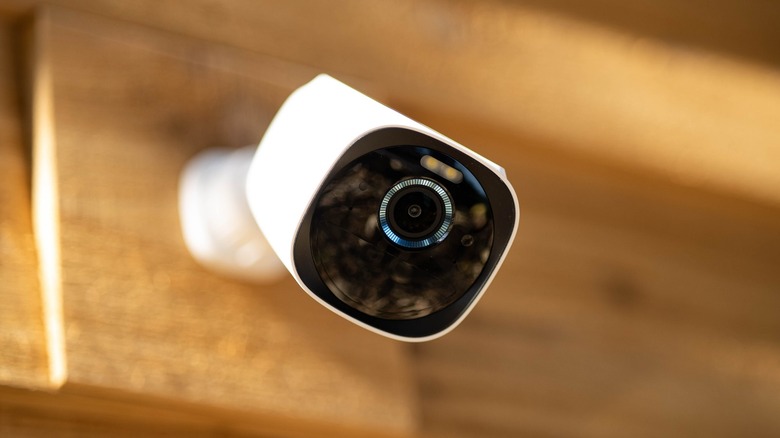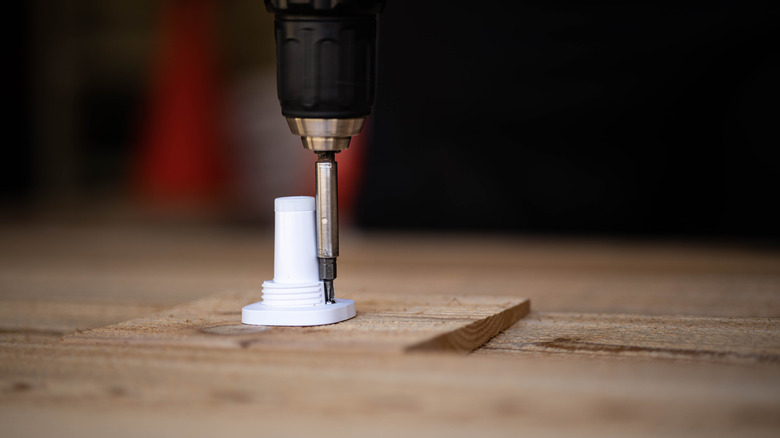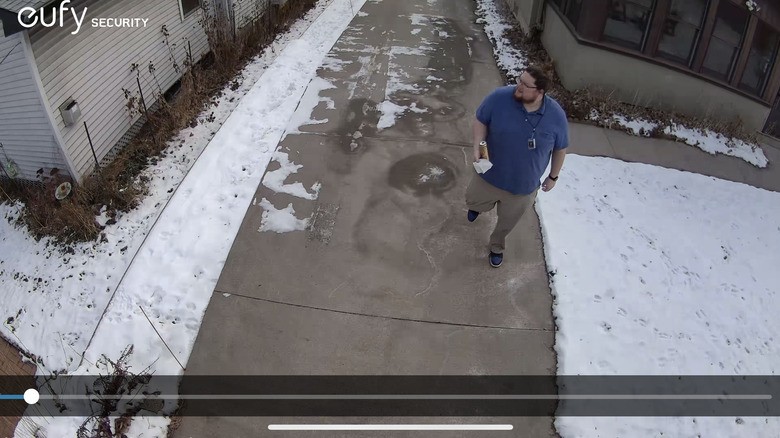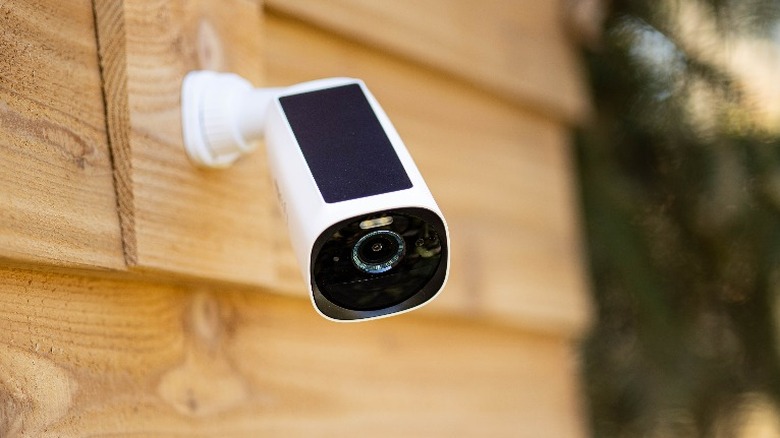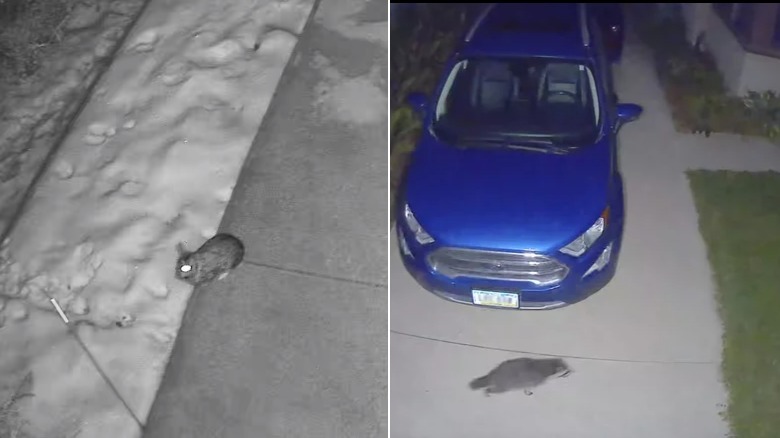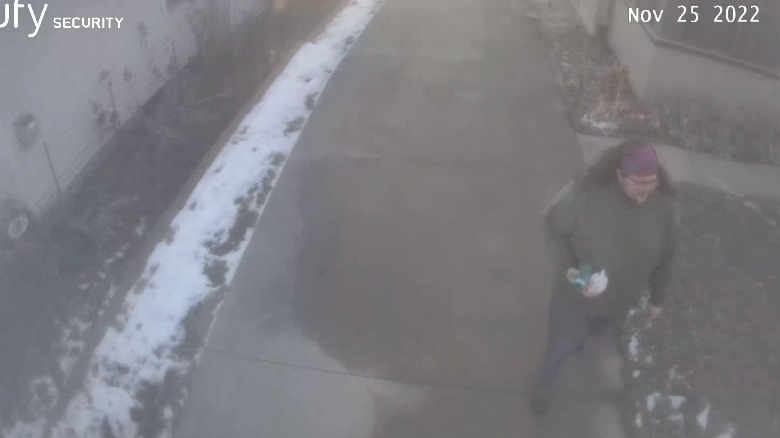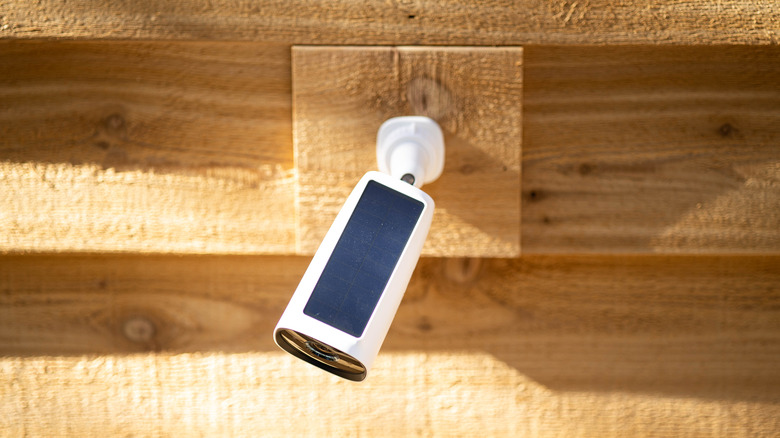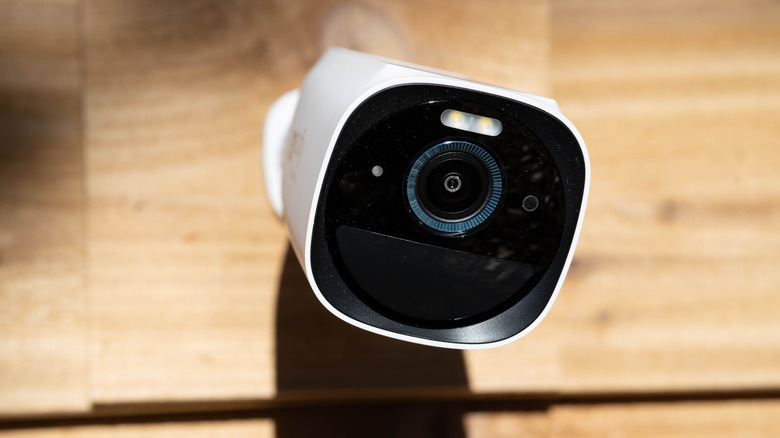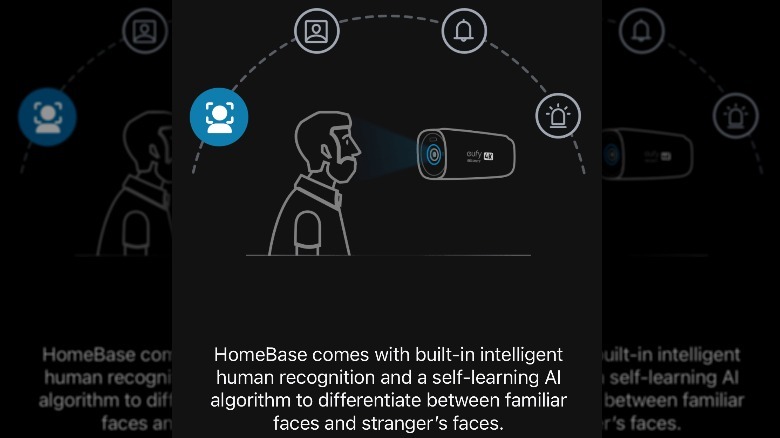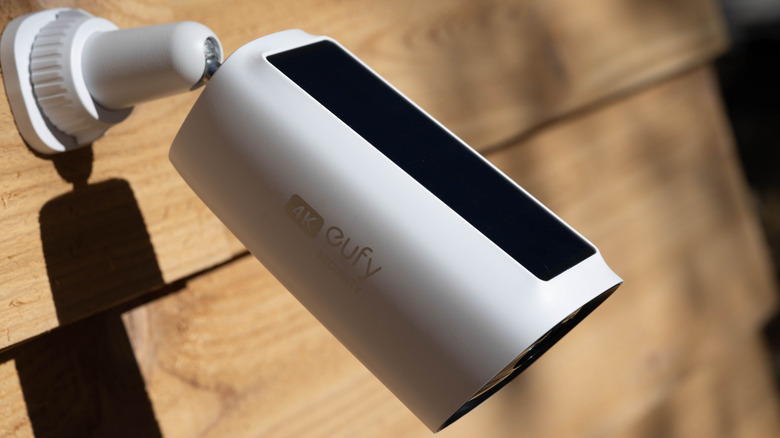S330 eufyCam 3 Review: Solar-Powered Home Security
- No battery or wiring stress
- No monthly subscription payment
- Secure, local storage
- Clear, quality day-and-night audio
- No 24/7 recording
- Speaking through camera was buggy
- Less-than-stellar response to security flaw discovery
We may receive a commission on purchases made from links.
There is no shortage of contenders vying for the seat of the most favored name in home security, and we've seen our fair share of them. Among the brands we'd put high on the roster is eufy Security, owned by Anker. Earlier this year, the eufy 4G Starlight Camera received very satisfactory marks from us in our review.
At the end of September, the home security brand — which actually sells everything from outdoor security cameras to smart pet products to baby monitors to robotic vacuum cleaners — released the S330 eufyCam 3, an outdoor security system that markets impressive capabilities: wireless solar charging, local storage and no monthly payment-based subscription necessary, AI facial recognition. After a mixed experience with the Arlo Pro 3 Floodlight Camera, I received the eufyCam 3 system with very high hopes for a home security ecosystem that performs to its full potential without breaking the bank, which is precisely what eufy ambitiously claims to do.
I was provided with the S330 eufyCam 3 two-camera system from Anker for the purpose of this review.
Before you proceed further take note: if you're planning on using a eufy Security camera for any purpose which would require the utmost secure encryption and totally-offline handling of camera media: eufy Security was recently the subject of an investigation which appeared to show some flaws in the way they handled streaming video. This is not the first time the company has been on the wrong end of a newsworthy security flaw. It would appear that both flaws were effectively fixed in relatively short order.
Unboxing, setup, initial impressions
The two-camera eufyCam 3 system comes with, obviously, two cameras, mounts and hardware for both, a hub/hard drive along with an ethernet cable, and charging cables for everything. Wow-ee-wow, the setup of the eufy cameras could not be easier. You're immediately instructed to download the app, plug in the hub/hard drive (referred to from here on out as the Homebase), and put the cameras on the charger.
If the next couple of days are sunny, it's not a huge deal to completely juice them up. These aren't instructions coming from eufy, this is just me telling you how incredibly efficient these cameras are even when given very little to work with. In fact, I was quite impatient — and also, just bad at reading directions the first time through — and put up my camera at barely a 20% charge, foolishly forgetting that the next three days were overcast and drizzly. Not only did the camera barely use 1-3% of its battery per day, but it also shouldered thoroughly only getting a couple of hours of solar exposure total over the entire course of that cloudy slump. That's eufy's so-called "forever power durability." Eventually, sunny days came along to charge the cam up — but I'm getting ahead of myself.
The entire eufy system — the Homebase, the camera, the mobile app — is impressively seamless in setup. From the time I connected the cameras in order to charge to the time I got the app installed and ready to the time I collected my stomach off the ground after the Homebase scared the daylights out of me by talking — yes, talking — to me through the camera-base connection process, barely five minutes had elapsed.
The tactile act of mounting the camera was pretty straightforward and standard, although you might have to do some ping-ponging around outside to find the best location that encompasses the area you want to be surveilled, picks up on a strong enough Wi-Fi signal, and is guaranteed to get at least a little bit of sun exposure each day. But don't worry, the app will help you with that.
Strong connectivity and clear video from the jump
I placed the eufy camera in the same location that I mounted my aforementioned review unit of the Arlo. The Arlo camera promised a stress-free connection to live video and audio streams — but it did not deliver. The Arlo's camera's live motion footage was mostly impossible to access despite being in a strong line to the Wi-Fi router; the live app view rarely loaded — and when it did, it was a full minute or two behind what was happening in real-time.
It's been an entirely different experience with the eufyCam 3. It took no time for the eufy to orient itself and start displaying a strong, clear live stream, like the above-pictured screenshot — no fuzziness, no frozen pictures, no broken or lagging audio. Watching the camera in real time was just as sharp as watching the saved video recordings. And with the camera's 135-degree field of view, I felt like everything important was in my eyesight. Faces, license plates, everything was perfectly legible even at the end of my 35-foot driveway.
Solid video performance in any environmental condition
The eufy was tested in a number of visibility conditions — night, of course, and rain, snow, and fog. During the daylight, nothing — not even a thick fog — compromised the capture quality of people, animals, and vehicles.
The 4K day-and-night video really comes in handy in the dark; while you certainly can't ask for every piece of fur on the fuzzy behind of a rabbit to be tack-sharp, the detail retention was still at a slight advantage compared to the Arlo, which tended to get a bit murky when there was motion at night. Below-left is a hopping bunny (captured by the eufy), below-right a scurrying raccoon (captured by the Arlo) — both images were grabbed while the animals, about equidistant from the cameras, were in motion.
The eufy can switch between black and white night vision, and spotlight night vision. The black and white night vision is more economical for battery life, and there doesn't seem to be much of a difference from my perspective viewing the video footage — looking at the spotlight itself, it casts a sizable circle of light, covering about 20 feet of driveway maybe, considering how small the bulbs are. It's not enough to blind someone trying to make off with the contents of your garage, but it would startle them. Similarly, the siren would spook off a trespasser but wouldn't startle anyone indoors awake.
The highest sensitivity of the eufy camera's motion detection did pick up on some big falling snowflakes, which I suppose is a point won in capability and a point lost in practicality. I had a few other phantom notifications over the several weeks while I used the eufy with max motion sensitivity, too.
The motion detection sensor was set off when nothing but a branch was blowing or a leaf went skittering across the driveway. Cranked-up sensitivity on the eufy doesn't seem needed to cover the motion of cars, people, and even small animals — so that part I would say was unnecessary. Otherwise, impressively detailed and clear visuals day and night, rain and shine.
Audio seems a challenge for most security cameras
The audio performance on the Arlo wasn't fantastic. And eufy's was marginally better in that there was no laggy or cut-up audio when watching from the app in live view, and the microphone seems of an overall higher quality because conversation and environmental noise was clearer in eufy's stored footage. But I got the same whooshing, white-noise-like feedback in the eufy as I got in the Arlo.
And here's why I couldn't rate the eufy a 10: the app-to-camera live speaking was barely functional. Everything else — the setup, the live video, the internet connection quality, even the camera-to-app direction of audio ran without a hitch.
But when I spoke remotely into the app, nothing but silence on the other end for one minute, then two, then three — and finally a sad, wobbly version of what I'd said would come out on the other side, if anything came out at all. This happened no matter where I, the app-holder, was.
In the house just 40 feet or so away, across town, on cellular connection or on a Wi-Fi connection to the internet. Talking to someone in front of the camera, whether they be as harmless as a mailman with a package or someone you want to spook away immediately like someone stealing said package, seems to be impossible. I'm not sure if it comes down to the camera, the camera speaker, the app, or something else — but somewhere along the line, someone was really awful at playing telephone.
The many other things that eufy does right
One of the most favorable features of the eufy is that it can be used long-term without a paid monthly subscription, and even when you're not paying a subscription, the brand doesn't snatch away all the features you wanted in the first place — the video storage, the facial recognition, the 4K video.
Local storage is favored over cloud storage with this camera. The HomeBase itself is equipped with 16 GB of storage, of which I'd used 9.4 GB by storing every single motion encounter (and I only had the camera set to record for 10 seconds after motion detection) for three weeks. So you could add on more external storage — the Homebase is expandable up to 16 TB, and eufy has since rolled out a camera kit option with a 1 TB Homebase instead of 16 GB — or you could just purge the archive once a month.
The facial recognition technology, which eufy calls BionicMind AI and AI Empowerment, performs very well. Trusted faces were recognized with incredible accuracy, even at night or when the person was turned around or all the way down the driveway.
The eufy Security app can mute motion notifications from trusted people, vehicles, or even pets, and alert you when a stranger is approaching your home. One thing I think worth mentioning is that eufy is compatible with Amazon's Alexa and Google Assistant home smart systems, but not Apple Homekit. Also, this camera doesn't support 24/7 recording, but if that's a dealbreaker for you, you probably have bigger things to worry about anyway.
Affordable peace of mind
This S330 eufyCam 3 system does everything a homeowner needs and caused me no stress while doing it — except for that audio thing, and I hope there's a software-based solution out there for that. There's no getting up and down ladders to change out batteries, no wires to finagle with, and the app is ridiculously user-friendly. There were no missed motion events — in fact, eufy says the camera is only capable of 25 to 30 feet of detection, but the camera picked up on pedestrians at the end of my driveway at least 35 feet away.
Overall, I would absolutely recommend the eufyCam 3 to anyone looking for a quality home security system. The kit of two S330 eufyCam 3 cameras and a 16GB Homebase 3 hub is a $549.99 initial investment, but it doesn't become a monthly expense. In the end, the S330 eufyCam 3 system is affordable, capable, and simple.
And even if the $550 price tag is too steep, there's the eufyCam 3C, which offers everything this camera does except the solar charging capability. A two-cam kit with the same Homebase runs $469.99.
